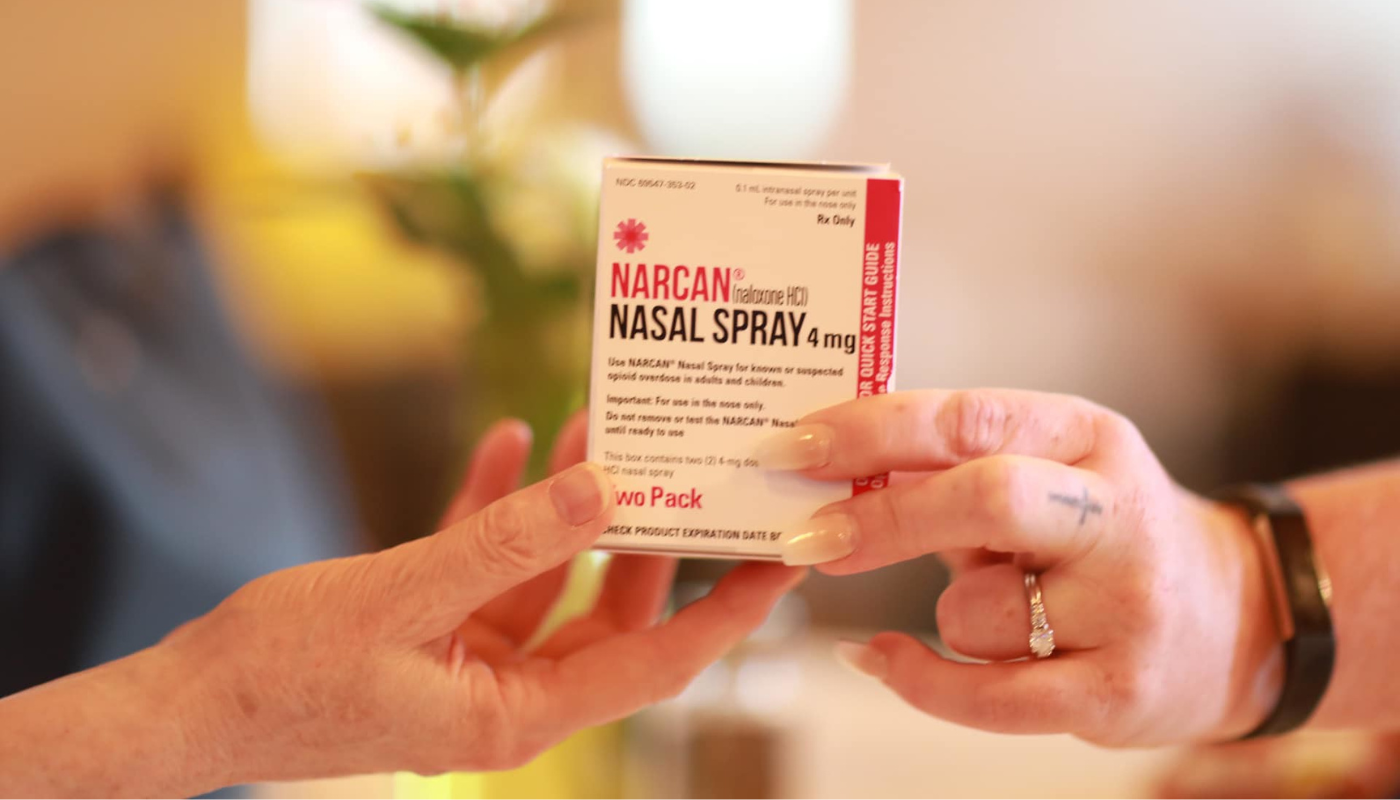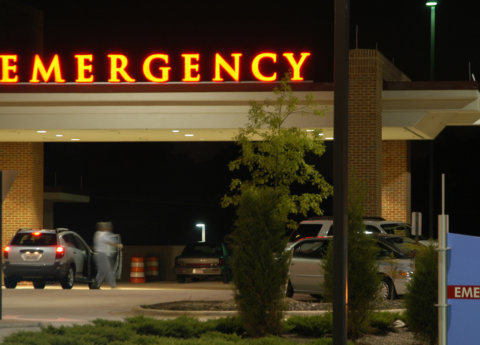Drug overdose deaths have declined in recent years both nationally and in Kentucky, but that progress is now at risk due to potential cuts that threaten more than $800 million in federal funding Kentucky receives to address substance use disorders (SUDs). Kentucky’s success addressing the state’s overdose crisis is in part due to improved access to evidence-based treatments for SUDs and opioid use disorders (OUDs) and significant investments in harm reduction strategies. These improvements are largely due to the expansion of Medicaid eligibility to all adults with low incomes (which is 90% federally-funded) and significant federal investments in our public health infrastructure.
Now Congress is moving toward significant potential Medicaid cuts and threatening current funding to Medicaid and public/behavioral health programs. Not only does that endanger the significant progress already made, it undermines work to further address an epidemic that still took nearly 2,000 Kentucky lives in 2023 and, despite improvements, is actually worsening for Black Kentuckians.
Federal funding helps prevent overdose deaths in Kentucky
Federal funding plays a crucial role in Kentucky’s efforts to prevent opioid overdose deaths by providing access to evidence-based SUD treatment, including for Medications for Opioid Use Disorder (MOUD), proven harm reduction strategies (such as Narcan, fentanyl testing strips and syringe support programs), community-based services and other supports.
Federal funding made up the vast majority of Kentucky’s spending to address SUD and OUD in 2023, which totaled more than $800 million. In addition to proposed cuts to Medicaid currently under consideration in Congress, there are plans to completely restructure the U.S. Department of Health and Human Services (HHS) and eliminate certain offices like the Substance Abuse and Mental Health Services Administration (SAMHSA) and the Centers for Disease Control and Prevention (CDC), which provide Kentucky with critical funding to address the overdose crisis. Some grants, including from the CDC and SAMHSA, have already been threatened by the Trump administration, resulting in immediate disruptions to services currently being rendered.

Medicaid provides thousands of Kentuckians each year with treatment and other OUD services
Proposed cuts to Medicaid under consideration in Congress would only worsen the opioid crisis by reducing access to these life-saving treatments and services.
Not only is Medicaid the backbone of health care in Kentucky, but it is also the state’s largest investment in treatment. There are more people with some form of SUD covered under Medicaid than covered under private insurance. Kentucky ranks fifth-highest among states for its rate of Medicaid recipients with OUD.
An analysis of SUD and OUD spending in Kentucky by RTI International showed that in 2020, 155,342 Kentuckians receiving Medicaid — or 9.5% of all Medicaid recipients — used at least one SUD service. In 2021, more than 54,140, or 3%, were specifically receiving treatment for OUD.
All states allow Medicaid to be used for some form of MOUD such as buprenorphine, naltrexone and methadone. These medications are proven to reduce overdose, reduce the risk of HIV and Hepatitis, and increase the continuation of treatment for people released from prison or jail. In Kentucky, Medicaid can also be used for counseling, hospital care and peer support. For Kentuckians receiving Medicaid who have been diagnosed with an SUD: 81% are receiving any medication, treatment or supportive service; 70% are receiving MOUD; and 45% are receiving therapy/counseling.
In 2014, Kentucky expanded Medicaid eligibility to include all adults under 138% of the federal poverty level (or FPL, which is roughly $21,500 for an individual), and roughly 480,000 adults are currently enrolled as a result. This expansion dramatically increased people’s ability to afford treatment and increased the number of providers willing to treat SUD/OUD. A national study published in the Journal of the American Medical Association found that Medicaid expansion was associated with reductions in total opioid overdose deaths and deaths involving heroin and synthetic opioids other than methadone. This same expansion, however, is a prime target for cuts in Congress as federal funding comprises 90% of its budget – $5.7 billion in Kentucky in 2024 alone.
Kentuckians rely on federal public health spending for essential harm reduction services
There are several other funding streams from the federal government that Kentucky utilizes to improve SUD & OUD outcomes. Tens of thousands of Kentuckians have benefitted from these efforts, and our wellbeing as a state depends on their continuation.
State Opioid Response (SOR) Grant
The State Opioid Response (SOR) grant program aims to reduce opioid-related overdose deaths through the provision of prevention, treatment and recovery support services. SOR grants have helped the state distribute Narcan, fentanyl test strips and expand syringe support services. A total of 96,768 Narcan units were distributed as part of the state’s overdose reversal efforts in fiscal year 2023. These funds were also used to support justice-involved individuals with OUD through reentry support and access to OUD medications.
The Substance Use Prevention, Treatment, and Recovery Service Block Grant (SUBG)
The Substance Use Prevention, Treatment, and Recovery Services Block Grant (SUBG) is a federal grant that focuses on services for people who are pregnant or have children, people who use drugs through injection, tuberculosis services and prevention services. In 2023, Kentucky’s SUBG funding was $21 million, 74% of which was used for SUD treatment services according to the RTI International analysis.
SAMHSA funding
Among the additional SAMHSA grants that support Kentucky’s efforts to address the opioid crisis are the First Responders – Comprehensive Addiction and Recovery Act (FR-CARA) grant, which was awarded to the Kentucky Department of Public Health (KDPH) in 2023 for the purpose of expanding Narcan training and dispensing the life-saving treatment to first responders. The program applies to 68 rural counties, many of which are in the eastern part of the state. Rural counties in Kentucky have high rates of opioid use and experience challenges to prevention related to economic disadvantage, location and far distances from treatment centers, and social stigma.
SAMSHA grants also help fund social service supports for Kentuckians impacted by opioids, such as housing, employment and recovery community centers. For example, during fiscal year 2023, almost 5,000 people received employment services and over 1,000 were hired for a job due to these grants. This kind of support is also critical because successful recovery requires meeting basic needs. Evidence shows that when people have access to housing, employment, and social support, they are more likely to participate in treatment and progress faster in recovery, and are less likely to die of overdose.
CDC funding
The CDC awarded a $43.4 million Public Health Infrastructure Grant (PHIG) to the Kentucky Department of Public Health (KDPH) in fiscal year 2023 for the recruitment and retention of public health workers, strengthening systems and processes and data modernization. State and local health departments play a vital role in opioid overdose prevention by providing evidence-based treatments and resources on a community level.
A $9.5 million PHIG grant was also awarded by CDC to the Louisville Metro Department of Public Health and Wellness to fund its workforce and support services that promote racial equity. Continued funding for local health department workers is critical because community members rely heavily on the harm reduction services that they provide locally. For example, harm reduction outreach services offered by the Louisville health department provide supplies and resources that prevent overdose deaths and the spread of bloodborne diseases, such as Hepatitis and HIV.
Additional CDC investments related to the opioid epidemic in Kentucky include the collection of data and research related to opioid overdose deaths. Data analysis is another critical part of prevention because it informs which policy and public health solutions are needed. In 2023, the CDC gave a total of $6.6 million to the KDPH for the purposes of overdose prevention, much of which was used to collect data related to overdose trends and conduct research to inform evidence-based practices.
Additional Health and Human Services funding
On March 24, the Trump administration abruptly suspended $11.4 billion in federal funding provided to state and local health departments since the beginning of the pandemic through the American Rescue Plan Act of 2021 and the Coronavirus Preparedness and Response Supplemental Appropriations Act of 2020. A judge temporarily halted these cuts through an emergency restraining order. If HHS is allowed to move forward, Kentucky will face a $148.8 million reduction in public and behavioral health funding that could reduce access to substance use disorder and other health services.
Approximately $10.5 million of this funding directly provides mental health and substance use disorder services across Kentucky through a Substance Abuse SAMHSA Block Grant. In addition, the potential elimination of several CDC grants to DPH could have a negative effect on outcomes for people who use drugs by worsening access to health services and weakening Kentucky’s public health infrastructure.
Under the termination notice the following CDC grant funds, which Congress already appropriated to DPH in Kentucky, would be eliminated:
- $5,119,682 allocated to bring health services to places where they previously did not exist, improving health outcomes in these communities as well as the state as a whole.
- $1,431,480 to train and bolster community health workers in Kentucky communities.
- $102,751,590 through the Epidemiology and Laboratory Capacity (ELC) Program allocated to fund initiatives to support data modernization of health departments and entities across the state and other initiatives to improve health outcomes.
- $29,002,919 to increase access to immunization across the state through investments in infrastructure initiatives.
Decreased federal funding will only worsen inequities experienced by Black and rural Kentuckians
Decreased federal funding will only worsen the existing inequities experienced by Black and rural Kentuckians. In addition, less funding for state and local health departments means fewer resources for individuals who are on the ground and have more localized context and connections to community members. The realities of racism, social stigma, harmful historical policies, and economic disinvestment create the conditions for Black and rural Kentuckians to be inequitably impacted by the opioid crisis.
From 2021 to 2022, the number of overdose deaths among white Kentucky residents decreased from 2,005 to 1,847 while the number of overdose deaths among Black residents continued to climb, and has increased 46.5% since 2020. In addition, the counties with the highest rates of OUD are concentrated in rural Eastern Kentucky.




